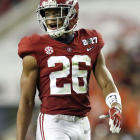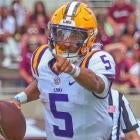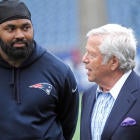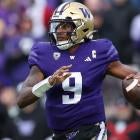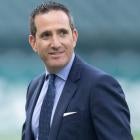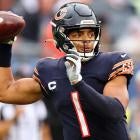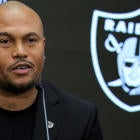If you were caught off guard by the fact that seven of the first 10 players selected in a defense-heavy draft were on the other side of the ball, and eight of the first 12, you were hardly alone. This top 10 was as wild and unpredictable as we've seen in quite some time, creating unusual circumstances for the many teams picking in the teens who were intent on aiding their defenses.
Wherever you were watching last Thursday night, it's unlikely that you were more shocked by the outcome of the first half of the first round than those gathered in the Baltimore Ravens' war room were. Baltimore, holding the 16th pick and coveting several Alabama defenders, were somewhat floored when they got on the clock and had Crimson Tide stalwarts Jonathan Allen (defensive line), Reuben Foster (linebacker) and Marlon Humphrey (cornerback) all on the board, to say nothing of consensus top-10 tight end O.J. Howard, also of Alabama.
The front office conducted any number of mock drafts and ran different analytical models to attempt to ascertain what the available selections might be ahead of the draft, but never did they foresee this. And given their unique connections to that program -- general manager Ozzie Newsome broke into the business with Alabama coach Nick Saban in Cleveland before the franchise relocated to Baltimore and was a superstar tight end there before going on to a Hall of Fame career with the Browns -- they had as deep a dossier on each of those prospects as any organization in the league.
Ravens assistant general manager Eric DeCosta, the team's GM-in-waiting whenever Newsome retires, walked me through the twists and turns of the draft, and how the team responded to a scenario it never envisioned in what I hope will be an annual exercise. The full audio of my in-depth interview with DeCosta is available on my "B-More Opinionated" podcast (also available on iTunes) for those seeking an even deeper dive into how the Ravens arrived at their full draft, and in the end the franchise's deep ties to the head coaches at Alabama and Michigan had plenty to do with the outcome of their selections.
Before the Ravens turned in the card bearing Humphrey's name with the 16th overall pick, they had to contemplate so many of the Crimson Tide's defensive core still being available.
"We looked at this draft as historically a very strong defensive draft," DeCosta told me. "We never really saw the scenario where teams would be so bullish about offensive players early on … Because this was such a strong defensive draft, the team that needed offense figured out they'd better draft them early … We didn't necessarily foresee that, but that's what ended up happening."
Alas, three teams traded up for quarterbacks within the first 12 selections and three receivers were gone in the first nine picks, to go along with the two running backs most clubs expected to go within the first eight picks, which set the bizarre drop of several top defensive players in motion. A team like the Titans, who were focused on pass catchers and defensive backs with their two first-round picks, opted to go offense first, leaving more options on defense for the likes of Arizona, Philadelphia, Indianapolis, Baltimore and Washington in the teens.
"As we kind of looked at this draft we had some players we really liked," DeCosta said, "and we kind of felt at 16 there would be a couple of receivers we could choose from -- not that they would have been picked there -- but we were very surprised to see those receivers go as early as they did."
So the Ravens got on the clock with options abounding to upgrade their defense, and, at a time when some clubs have maligned the Alabama program for perhaps working players too hard -- leaving them vulnerable to injury in the pro ranks -- the Ravens were thinking just the opposite.
"We're fortunate because of our relationship with Alabama and the fact that our GM Ozzie Newsome played there, we get a lot of good information about those prospects," DeCosta said. "And we admire those players, and we love the fact that they play for a very successful program and for a coach that has an NFL background. It is a program where we believe players come into this league from Alabama, and they're ready for the NFL. And you can't say that about every program in the country."
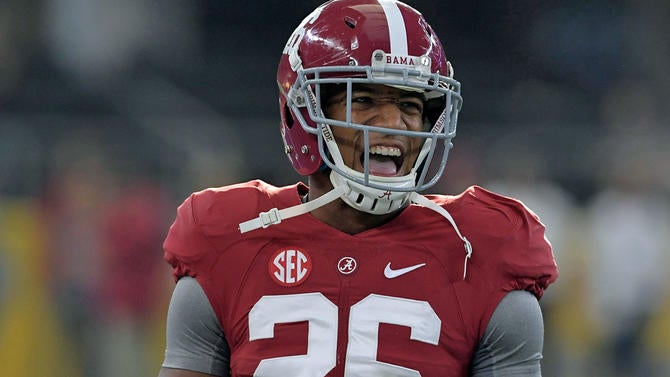
Of the esteemed group still on the board at No. 16, Humphrey stuck out for the Ravens. Despite heavy offseason additions to the secondary in recent years, corner remained a position of concern. The Ravens love Humphrey, who comes from an NFL family, plays at a high level and is super clean. Many clubs saw him as the second-best corner available in this draft, and Baltimore figured he'd already be gone by then. Given a lack of proven weapons on offense, Howard would have made perfect sense as well, but ultimately the impact of the position carried the day.
"O.J. Howard was one of best players in the draft, no doubt about that," DeCosta said. "What every team is faced with is the idea of how they're going to build their team most effectively. I think for us in terms of positional strength and positional need, and in terms of positional importance in football, I feel like the foundational positions are left tackle, quarterback, corner, pass rusher. And the idea that we can get a very good corner in this draft was very important to us, and that's not any kind of indication of O.J. Howard's ability."
I couldn't help but wonder, had the Colts with pick No. 15 not grabbed Ohio State safety Malik Hooker, who earned comparisons to the Ravens' all-time great safety Ed Reed, would the Ravens have been swayed to go that way, even despite making big investments in safeties Eric Weddle and Tony Jefferson the past two years? DeCosta pointed to those same acquisitions and Humphrey's talent, and it was clear they badly wanted this particular cornerback.
Baltimore went back to Alabama in the third round, taking speed rusher Tim Williams with their second of two picks in that round. Williams has his demons and was off some team's draft boards, and he's someone who needs a dedicated support staff helping him transition to life in the NFL. The Ravens, deeply vetting him in Tuscaloosa and beyond, were more than ready to make that commitment when he got to them with their final pick of Day 2 of the draft.
On pure talent alone, Williams is at worst a top-15 proposition in this draft. He has the ability -- even if only on third downs -- to impact the passing game by attacking the quarterback, and he fills Baltimore's primary need. His selection was the culmination of months of background checks, interviews, psychological profiles and hours of discussion within the organization becoming comfortable with the troubled player.
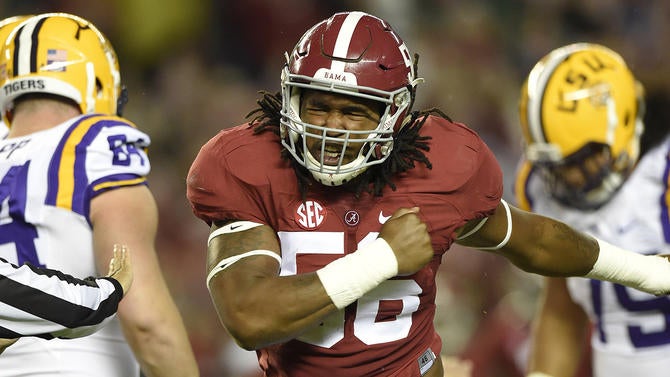
"We interviewed Timmy at least three different times," DeCosta said, "once at the combine and once in Baltimore and then once in Tuscaloosa. We spoke with multiple coaches on their staff and multiple support staff people at the school. We used various different people to interview Timmy, and it really provided a strong assessment of his strengths and weaknesses, and his best situation to survive and succeed and really thrive in the NFL."
The Ravens were a team I continued to hear connected to Williams in the lead-up to the draft. The more time they spent with him, the more they felt comfortable bringing him into the organization. Given the historical strength of their locker room, Newsome's ties to the Alabama program and their support staff and an overall commitment to making this pick work, they took the risk. His fit in their scheme and his talent are undeniable, and it could end up being one of the absolute steals of this draft.
"I think this is the perfect spot,"' DeCosta said, "and as he began to fall we began to look at what we perceived his value to be, and it just made way too much sense for us to take him based on the discussions that we've had going back to January about impacting the quarterback and pass rush and Timmy still being there … In the third round to get Timmy Williams is s slam dunk in our opinion."
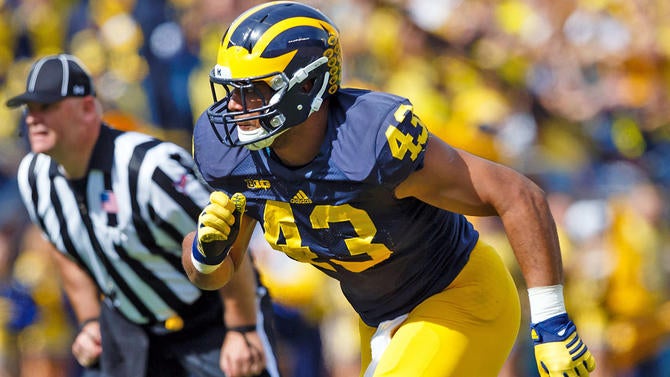
The Ravens also had a unique insight into their other third-round pick, Michigan defensive lineman Chris Wormley. Of course, it doesn't hurt when your head coach is the older brother of the Michigan head coach. Baltimore lost Timmy Jernigan and Lawrence Guy from its defensive line in the offseason. The team runs a complex front, toggling from one gap to two gap and requiring a deep rotation, and Wormley has the size, frame and speed to be an impact player from the inside.
Other teams were raving about this selection after the draft, and the strong Harbaugh endorsement certainly helped.
"Coach (Jim) Harbaugh just raved about him as a player on the field and off the field. All of that stuff. This is a big, physical guy … He just made too much sense for us not to take. We think this is a plug-and-play guy who can come in and impact our defense."
During a pre-draft period when smoke screens and misdirection and outright lies are the norm, it goes a long way knowing certain relationships are impervious to all of that. The Ravens can cut through any BS and get the straight dope at Alabama and Michigan without a doubt, and the Tuscaloosa and Ann Arbor influence is impossible to ignore in a draft class the franchise hopes will lead Baltimore back to the postseason after a recent malaise.
If nothing else, the defense will have more edge and bite, and the secondary has to be one of the strengths of the roster heading in to 2017.













